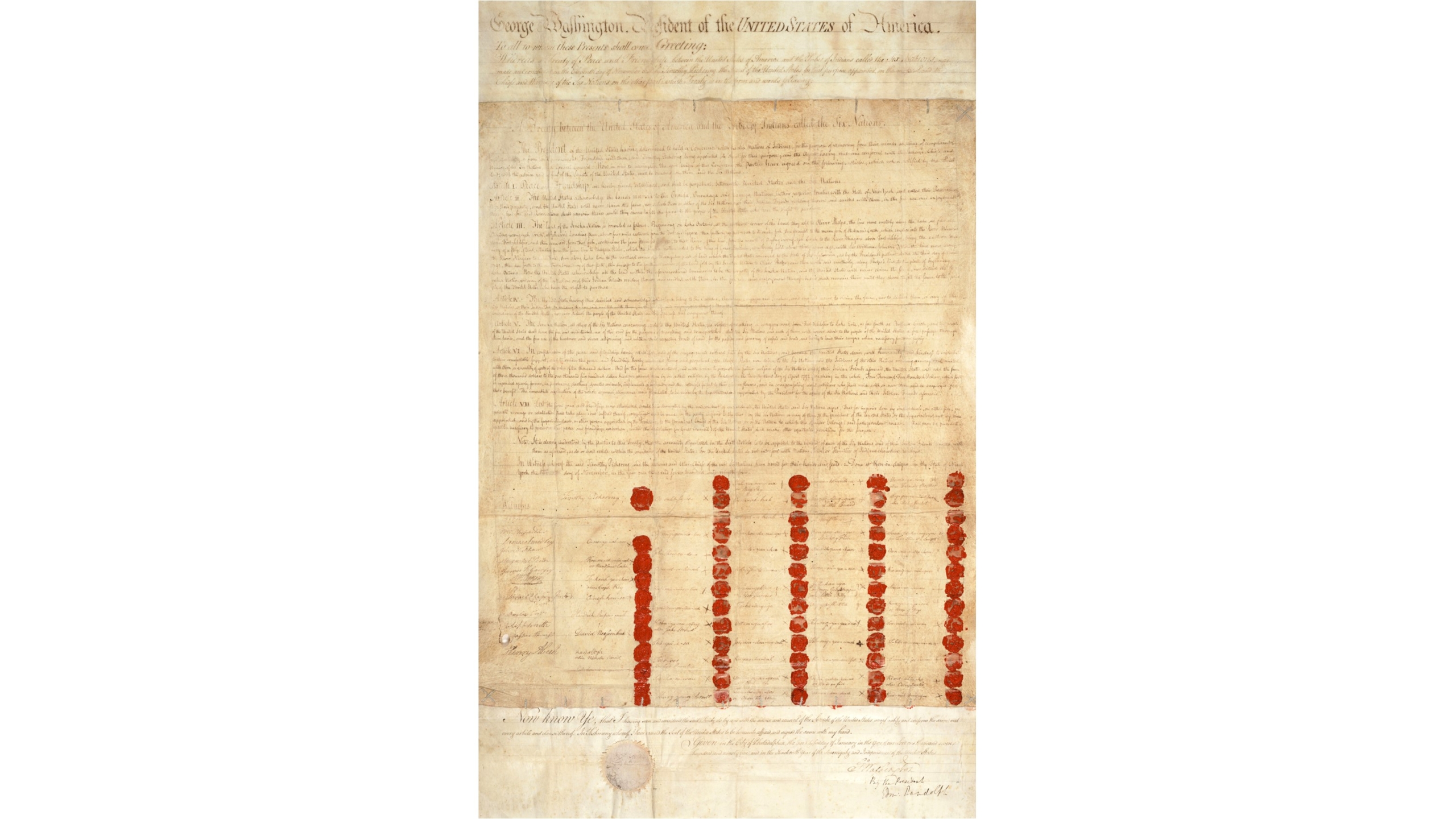The intricate relationship between tribal nations and the United States has a long history that predates the U.S. Constitution. Undergirded by a number of treaties that collectively recognize the sovereignty of tribal nations, the relationship is, at its best, one of nation-to-nation engagement. Yet the history of nation-to-nation engagement has been a troubled one, marked by unfulfilled commitments and deep disagreements about how treaties apply, to whom, and when. Today, we explore a selection of the treaties that have defined relations between tribal nations and the State of New York.
We look specifically at the history of relations with the Haudenosaunee Confederacy, and particularly the Treaty of Canandaigua, a pivotal document that shapes our understanding of sovereignty, land rights, and cultural preservation. This blog post aims to provide a small window perspective on Haudenosaunee-U.S. relations, with no claims to being exhaustive.
Prior Treaties
The Treaty of Cananadaigua was one of a series of treaties between the United States and the Haudenosaunee. Before Cananadaigua was signed in 1794, two other treaties were established. The first was the Treaty of Fort Stanwix (1784). This was a foundational agreement between President George Washington’s delegation and the Haudenosaunee. Seeking peace, the treaty outlined separate sovereignties for both parties. Federal boundary lines were established to prevent further settlements and conflicts. A second treaty, the Treaty of Fort Harmer (1789), reaffirmed the sovereignties of both the Haudenosaunee and the United States. Emphasizing federal boundary lines and principles of peace and friendship, this treaty played a significant role in shaping the evolving dynamics between the parties.
The Canandaigua Treaty (1794)
These treaties set the stage for 1794’s Treaty of Canandaigua. This agreement once again reaffirmed the separate sovereignty of tribal nations and the United States. Adjusting federal boundary lines to prevent further disputes, the treaty established mechanisms for settling conflicts, showcasing a commitment to peace and friendship. Signed on November 11, 1794, this pivotal agreement marked a crucial chapter in the evolving relationship between tribal nations and the emergent American state.
At its core, the Treaty of Canandaigua reaffirmed the separate sovereignty of the Haudenosaunee and the United States. Federal boundary lines were meticulously adjusted to prevent further encroachment on Seneca Territory, reflecting a commitment to preserving the integrity of tribal lands. A noteworthy provision, Article 7, was established to settle disputes between Native and non-native individuals on each other’s territories. This pragmatic approach to conflict resolution fostered a framework for peaceful coexistence between the Haudenosaunee and their new neighbors.
Contemporary Agreements and Legal Developments
The Treaty of Canandaigua played a pivotal role in replacing and consolidating earlier agreements, particularly the Treaty of Fort Harmer. The nuanced adjustments to federal boundary lines and the explicit commitment to peace and friendship between the Haudenosaunee and the United States solidified the foundation for a more stable and cooperative relationship. This nation-to-nation relationship was not always stable and cooperative, as history has shown repeatedly, but efforts to improve relations continue and the fundamental concept of tribal nation sovereignty and the nation-to-nation relationship have grown in recent years. Land claims, gaming compacts, environmental stewardship, and cultural respect are primary focuses in the contemporary landscape, with greater value being placed on indigenous viewpoints by some elected officials and the court systems offering a more nuanced perspective on these developments.
There are many ways to learn more about the subject of nation-to-nation relations and how it impacts the operation of courts at the state, federal, and tribal levels. In 2021, the Society interviewed the Honorable Mark Montour, the first Native American jurist in New York State, on his pioneering work and the ways that the state courts and tribal nation courts interact to ensure equal access to justice for Native Americans. The American Indian Law Alliance has many resources on topics of sovereignty, treaty law, and more. Finally, the National Congress of American Indians offers a highly informative guide on the structure of various tribal governments, the history and principles of tribal governance, and useful insights for the public at large on contemporary tribal nations.

